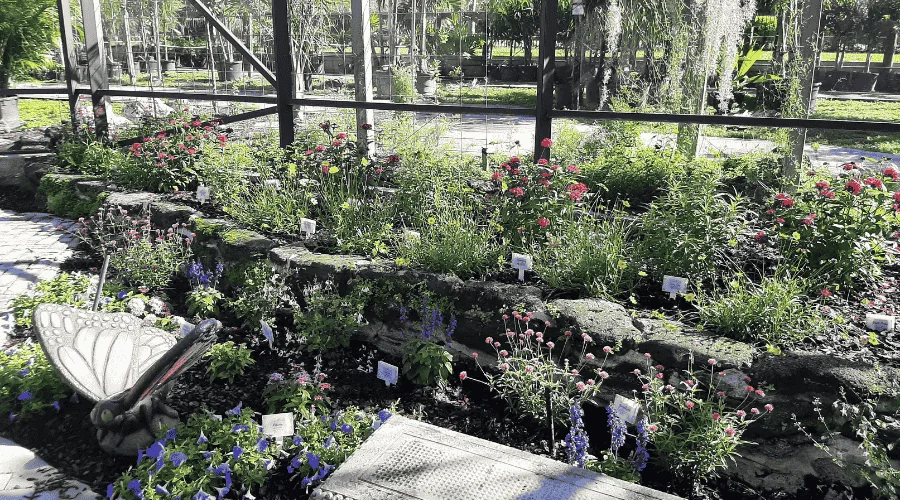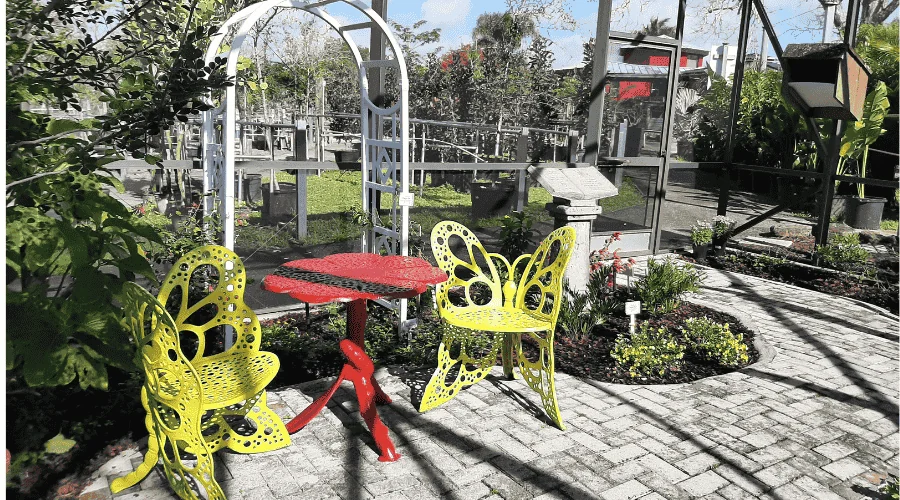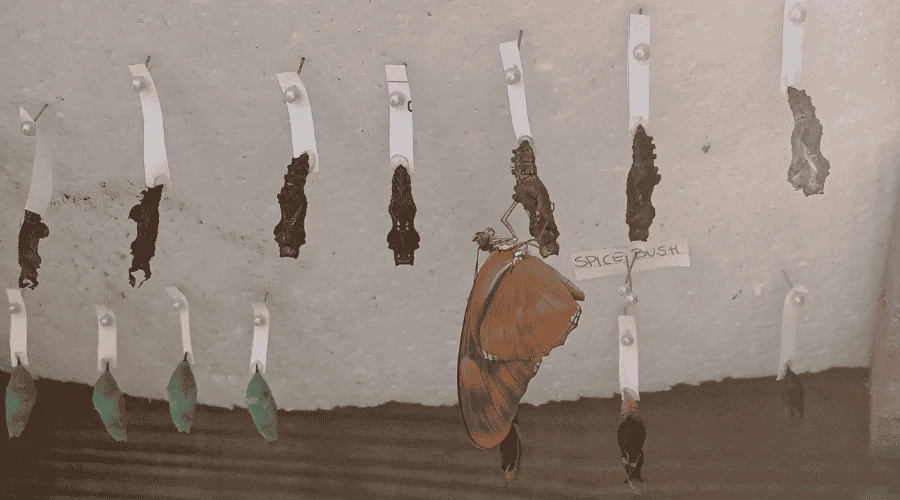By Amanda Rose Newton
Butterflies aren’t just beautiful—they’re essential pollinators and indicators of a healthy ecosystem. This edition of Habitat Heroes is about creating a butterfly garden that supports every stage of a butterfly’s life—from egg to adult. And yes, this is entirely possible with the right selection of plants, especially native ones that Florida’s butterflies already recognize and rely on.

Whether you’re working with a few containers on a patio or planning a full pollinator meadow, here’s how to create a true butterfly haven.
1. Host Plants – For Caterpillars to Feed On
Host plants are where butterflies lay their eggs and where caterpillars get their first meals. Choosing native species ensures compatibility with Florida’s native butterflies and supports their full life cycle.
Top 5 Native Host Plants for Central Florida:
- Milkweed (Asclepias spp.) – Especially swamp milkweed (A. incarnata) and butterfly milkweed (A. tuberosa) for monarchs and queens.
- Passionvine (Passiflora incarnata) – Host for Gulf fritillaries and zebra longwings.
- Cassia (Senna ligustrina or S. mexicana) – Loved by sulphur butterflies.
- Parsley, Dill, and Fennel (non-natives but great for Black Swallowtails) – Popular in kitchen gardens!
- False Nettle (Boehmeria cylindrica) – Supports red admirals and other brush-footed butterflies.
Pro tip: Allow these plants to get chewed! That’s their purpose in a butterfly garden.

2. Nectar Plants – For Adult Butterflies
Once butterflies emerge from their chrysalises, they need energy—and lots of it! Nectar-rich flowers in bright colors (especially purple, red, and yellow) are key.
Top 5 Native Nectar Plants for Central Florida:
- Coreopsis (Coreopsis spp.) – Florida’s state wildflower and a butterfly magnet.
- Blanketflower (Gaillardia pulchella) – Long-blooming and drought-tolerant.
- Purple Coneflower (Echinacea purpurea) – Great for both butterflies and pollinators.
- Lantana (Lantana depressa or native L. involucrata) – Stick with the native types to avoid invasiveness.
- Tropical Sage (Salvia coccinea) – A favorite for both butterflies and hummingbirds.
Pro tip: Cluster flowers in drifts to make them easier to find and more attractive to fluttering visitors.

3. Shelter & Habitat – For Protection and Roosting
Butterflies need more than food—they need places to rest, hide from predators, and even survive storms. Use a mix of native shrubs, grasses, and small trees.
Top Habitat Plants (or Features):
- Firebush (Hamelia patens) – Great shelter and nectar, too.
- Beautyberry (Callicarpa americana) – Provides cover and fall berries for birds.
- Muhly Grass (Muhlenbergia capillaris) – Offers low shelter and visual beauty.
- Yaupon Holly (Ilex vomitoria) – A dense native shrub that provides excellent cover.
Pro tip: Standing dead wood or brush piles – Leave some natural features for overwintering.

Tips for Success

Gardening with Purpose
By supporting every stage of the butterfly’s life—from egg to adult—you’re not just planting flowers; you’re planting a future. With Florida’s long growing season and abundance of native species, you have the perfect environment to make a difference.


